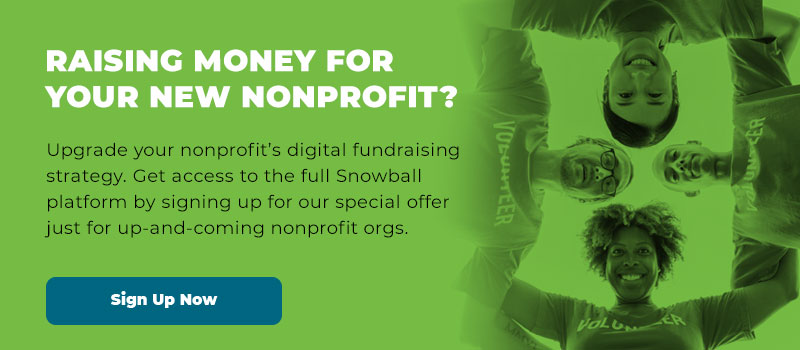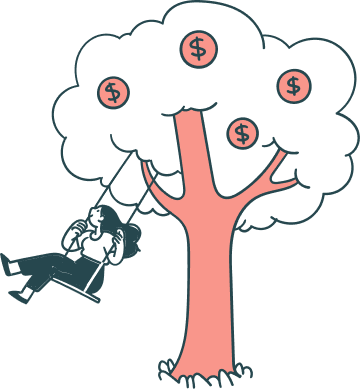Your members are one of the most important parts of your organization. They help keep your doors open and your lights on. But how can you make sure that they’re being taken care of?
Managing your members can seem like an overwhelming task, but by breaking it up into smaller, manageable sections, you can see how easy it is to keep your members happy and your organization running smoothly.
Let’s take a look at those simple steps now.
- Select the right member management software.
- Keep your member data clean and updated.
- Track your members’ engagement.
- Segment your members for optimized communications.
- Encourage matching gifts awareness.
- Communicate with your members frequently.
- Always say thank you to your members.
By following these seven steps, you can be on your way to managing your members with ease. Let’s get started.
1. Select the right member management software.
There are so many different types of membership management software out there, so you have to make sure that you’re choosing the right one.
In general, your software has to be compatible with your mission, be easy to use for everyone on the team, and run smoothly. But what else is important to keep in mind?
Take a good look at your organization and consider its needs. What does your software absolutely have to be able to do? Here are some suggestions to get you started:
- Integration abilities with your existing software
- Communications options
- Member directory maintenance
- Member participation and purchase history
- Analytics and reporting abilities
Of these factors, the most important might be its integration abilities.
You don’t want to purchase a member management software only to find out that your email platform or matching gifts database can’t work with it.
No two organizations are the same, so you’re going to need the software that best fits your nonprofit’s individual needs!
If you’re an admissions-based nonprofit like a museum, you’ll have different preferences than a donations-based nonprofit. Head over to Doubleknot’s ultimate guide to museum software to make sure you’re getting the right program.
2. Keep your member data clean and updated.
All the data in the world won’t do you any good if it’s hard to understand or out of date.
For this reason, we recommend that you stay on top of your member data. Keep a variety of ways to contact them on hand, and make sure that this information remains accurate.
Consider implementing a yearly reminder email to your members to update their:
- Home address.
- Cell phone.
- Home phone numbers
- Email addresses.
Occasionally, you may have members legally change their names. Make sure you can change their profile to reflect that information!
Keeping contact information accurate is the best way to keep track of your members and ensure that they know what’s going at with your organization so they can make the most of their membership.
Another way to keep your member data clean and organized is to ensure that either your team goes through your directory every once in a while to delete duplicate accounts, or that your software has a deduplication program.
Not only do duplicate programs skew with your membership data, but they cause an annoyance for the member if they receive emails, letters, and calls repeatedly.
One more way to remove this annoyance is to allow families to have linked profiles. This way, you can plan direct mail or phone campaigns by household, instead of by individual. This will save you printing and shipping costs as well as time.
If you really want to maintain an accurate database, and your membership software allows you, consider letting your members maintain their profiles themselves. This way, you can ensure that the data is accurate, without having to track down the members themselves to ask.
We know that this can sound like too much work, especially if members are prone to forgetting their passwords. Try Swoop’s list of password alternatives to find a more convenient solution for your supporters.
3. Track your member’s engagement.
Your members’ profiles shouldn’t be just based in who they are. They should include what they do, as well!
Members’ activities might vary by organization, but all of them, from museums to animal shelters, can benefit from understanding what engages their members.
Optimize your data-gathering techniques by collecting information about your members’ engagement with your nonprofit by tracking how they interact with your cause. This can include different actions for different nonprofits, but some common ones are:
- Purchases of merchandise
- Donations to your organization
- Visits, if you’re an admissions-based nonprofit
- Event attendance
- Volunteer participation
By knowing how your members interact with your organization most, you can adapt and vitalize your recruitment campaign. Do the majority of your members attend your fundraising events? Reach out to non-members at those events and explain membership perks.
Don’t forget to make sure that you’re counting both online and traditional methods of donation. While traditional donations are still massively popular, online donations are becoming more and more popular.
You can also use this data to keep track of which membership benefits are being utilized most often. Are your members-only parties a hot social event? Or is free parking at your museum the biggest draw?
Members’ donation patterns are also a goldmine of information. Which seasons are most fruitful for your organization? Which campaign strategies have paid off the most? Use these insights to plan your next campaign.
4. Segment your members for optimized communications.
Now that you have all of this data, how can you make it work for you?
Use the information you’ve collected to refine your communication strategies! If you know your members, you can specifically target them with relevant content.
What are some ways you can segment your members?
- Supporters who are parents
- Retirement status
- Age groups, like young adults or those over 35
- Gender identification
By knowing these demographic markers, you can make some educated assumptions about your constituents to more intentionally send them relevant and interesting information.
Parents with children would love to know about Kids Nights or other fun programming ideas aimed at a younger crowd that your organization might be holding.
Young adults, especially young professionals, might be more interested in networking nights or informational dinners, especially with museums.
You can also track more personal information in their member profiles, once your organization interacts with them more frequently. Do they tag your nonprofit in social media posts? Make a note of their handle.
If they’ve ever filled out a survey for you regarding your nonprofit’s work, keep that survey accessible from their profile so that you know what your nonprofit does that drew and kept their attention.
5. Encourage matching gifts awareness.
When collecting information about your members, consider asking them for their employer. This tidbit of information is both useful for segmentation and for increasing your organization’s donations.
An employer’s matching gifts policy refers to when they give an amount of money to an organization because their employee donated money. All too often, the only reason more people don’t take advantage of this easy way to increase their impact is because they don’t know about it!
Keeping track of your members’ employers is a great way to maximize these programs. If you know their employer, once they make a donation, you can use a matching gifts database software to check if their gift is eligible and then send them the necessary paperwork.
If you already have this information, check if any of your members work for any of the following companies known for their generous matching gifts programs:
- General Electric
- Soros Fund Management
- BP
- Gap Corporation
- ExxonMobile
- CarMax
- Johnson & Johnson
- Choice Hotel
- Microsoft
- Coca-Cola
This is far from an extensive list, but it’s a good start. And if your members are more frequently volunteers than donors, find out if their employers offer a volunteer grant program.
A volunteer grant program donates money to an organization that an employee volunteers for, based on hours of work.
Taking advantage of corporate philanthropy is a fantastic way to keep your members involved and engaged, without requiring them to dig any deeper into their own wallets.
6. Communicate with your members frequently.
Don’t let your only interaction with your members be to ask for money! A great way to keep them involved is to use your membership database to keep in touch with your members.
Your members have become members because of their dedication to your nonprofit and their desire to be more involved than a casual patron. Don’t be afraid to keep them updated on everything going on in the organization.
While you’ll naturally let them know about upcoming fundraising or pledge campaigns, also keep them in the loop on different projects and activities!
Email them monthly newsletter updates regarding the projects your organization is taking on, or consider drafting a members-only newsletter to keep them updated on membership benefits or special members-only events coming up.
Having all this information on your members stored in one place is a great way to make your organization’s connection with them more personal. Try some of these effective communication strategies:
- Is someone having a birthday? Send a card or sweet email.
- Did someone have a child or get married? Say congratulations.
- Has someone been absent from events for a while? Say that you miss them.
- Just finished an annual report or impact report? Send it to them!
Frequent communication will keep your organization in the forefront of their minds, as well as demonstrate to them that your organization cares about them.
7. Always say thank you to your members.
An easy way to retain members and keep them coming back to your organization is to ensure that you always make them feel appreciated for their efforts.
There are a variety of ways to do this, from in person to via email, but the key is to do it regularly.
Put a thank-you section in your organization’s newsletters where you recognize that month’s donors, as well as sending a personal note or email to the donor.
Say thank-you to your members during speeches at events for their continuing support of your shared mission and their belief in your organization.
After all, no one has to become a patron or member of a nonprofit. Their membership, whether it is to a museum, an animal shelter, or any other type of nonprofit organization, is a way for them to express their support for the cause. They deserve to feel appreciated!
Managing your members doesn’t have to be a Herculean task. With some smart software and a game plan, you can make the most of your membership program and ensure that your members have a strong connection with your organization.
Your members are the backbone of your organization, and keeping them happy keeps your nonprofit happy. A strong membership strategy is a great way to do it.
Author Bio




